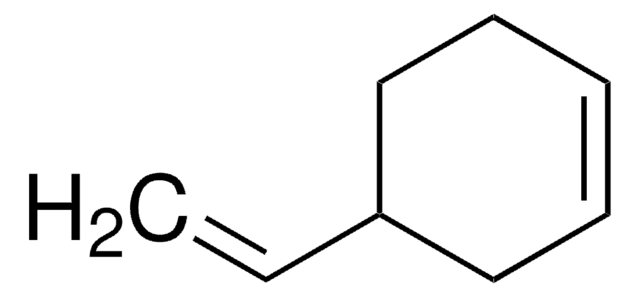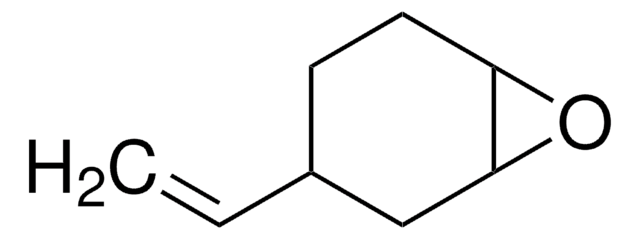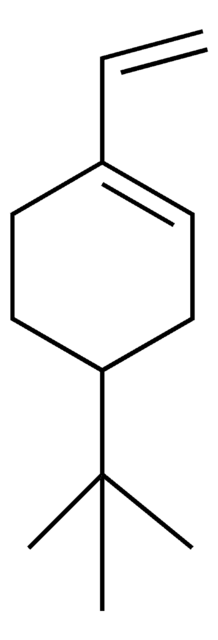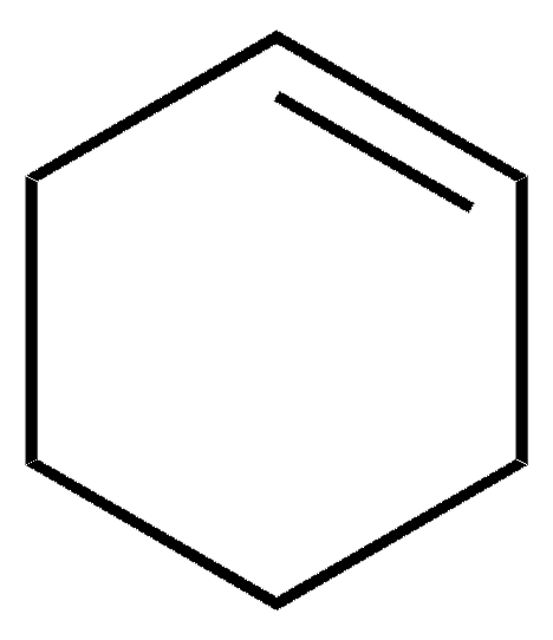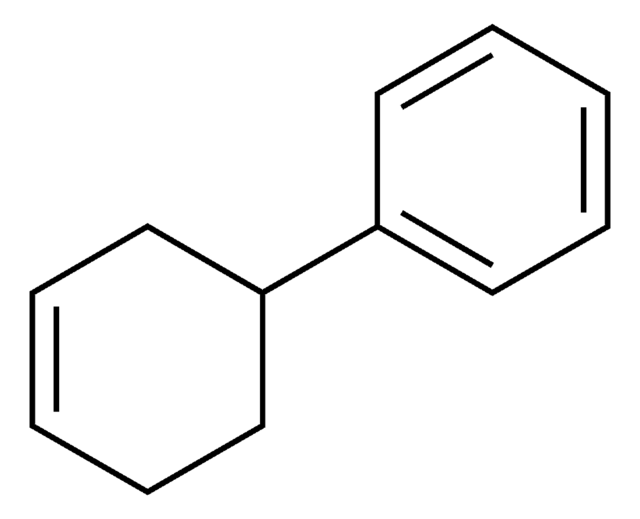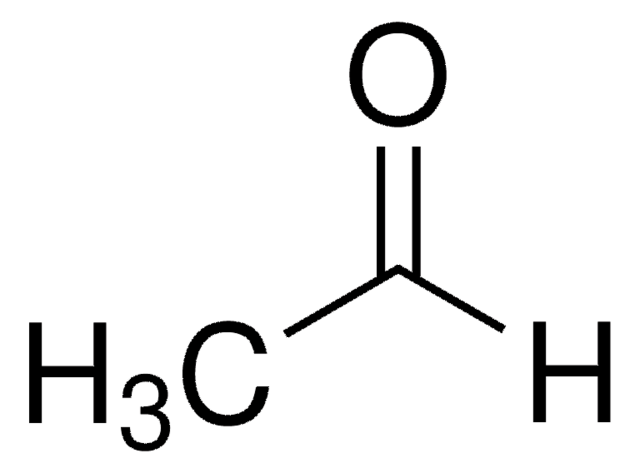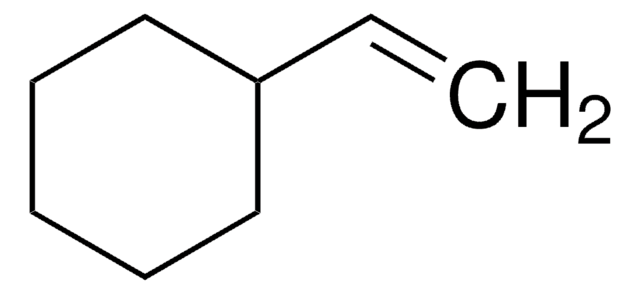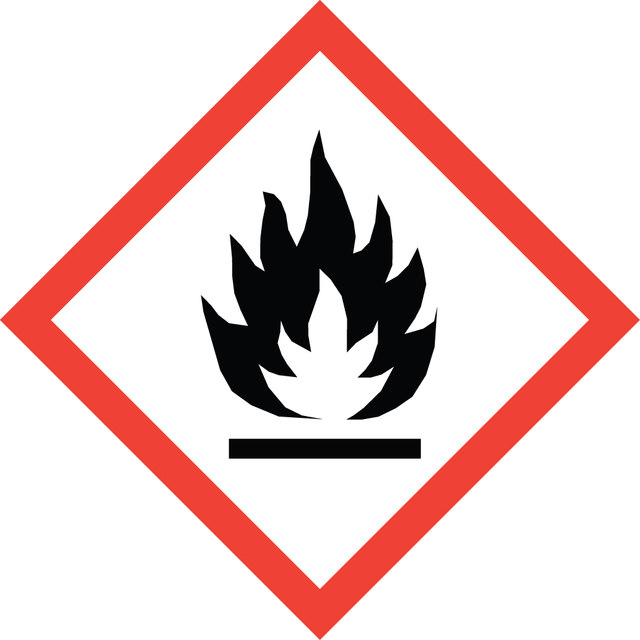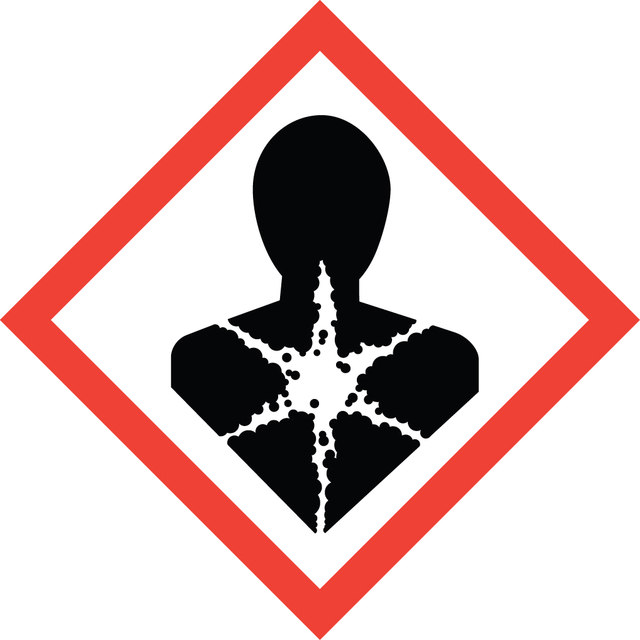推荐产品
蒸汽密度
3.76 (vs air)
蒸汽压
10.2 mmHg ( 25 °C)
方案
99%
自燃温度
517 °F
包含
25-200 ppm p-tert-butylcatechol as inhibitor
折射率
n20/D 1.463 (lit.)
沸点
126-127 °C (lit.)
mp
−101 °C (lit.)
密度
0.831 g/mL at 20 °C
0.832 g/mL at 25 °C (lit.)
储存温度
2-8°C
SMILES字符串
C=CC1CCC=CC1
InChI
1S/C8H12/c1-2-8-6-4-3-5-7-8/h2-4,8H,1,5-7H2
InChI key
BBDKZWKEPDTENS-UHFFFAOYSA-N
正在寻找类似产品? 访问 产品对比指南
警示用语:
Danger
危险分类
Aquatic Chronic 3 - Asp. Tox. 1 - Carc. 2 - Flam. Liq. 2 - Repr. 2 - Skin Irrit. 2
储存分类代码
3 - Flammable liquids
WGK
WGK 2
闪点(°F)
60.8 °F - closed cup
闪点(°C)
16 °C - closed cup
个人防护装备
Eyeshields, Faceshields, Gloves, type ABEK (EN14387) respirator filter
法规信息
新产品
Patricia B Hoyer et al.
Birth defects research. Part B, Developmental and reproductive toxicology, 80(2), 113-125 (2007-03-08)
The occupational chemical 4-vinylcyclohexene (VCH) has been shown to cause destruction of small pre-antral follicles in ovaries of mice. Further, its monoepoxide metabolites, 1,2-VCH epoxide, 7,8-VCH epoxide, and the diepoxide, VCD, have been shown to cause pre-antral follicle loss in
Cinzia Chiappe et al.
Chemical research in toxicology, 16(1), 56-65 (2003-04-16)
The stereochemical course of the biotransformation of 1,2-monoepoxides of 4-vinylcyclohexene (2 and 3) by liver microsomes from control and induced rats and by purified P4502B1 and P4502E1 has been determined. The epoxidation of monoexpodies cis-4-vinylcyclohexene 1,2-epoxide (2) and trans-4-vinylcyclohexene 1,2-epoxide
Gold(I)-catalyzed asymmetric cycloisomerization of eneallenes into vinylcyclohexenes.
Michael A Tarselli et al.
Angewandte Chemie (International ed. in English), 46(35), 6670-6673 (2007-07-31)
D A Keller et al.
Toxicology and applied pharmacology, 144(1), 36-44 (1997-05-01)
4-Vinylcyclohexene (4-VCH), the dimer of 1,3-butadiene, is an ovarian toxicant in mice due to the formation of a diepoxide metabolite, but the tissue-specific site of formation of the metabolites is unknown. Microsomal preparations from liver, lung, and ovaries obtained from
J K Doerr-Stevens et al.
Drug metabolism and disposition: the biological fate of chemicals, 27(2), 281-287 (1999-02-04)
4-Vinylcyclohexene (VCH), an ovarian toxicant in mice, is known to irreversibly deplete ovarian follicles as a consequence of VCH diepoxide formation. Because ovotoxicity requires repeated dosing of VCH, the effect of consecutive daily doses of VCH (7.5 mmol/kg/day) on mouse
我们的科学家团队拥有各种研究领域经验,包括生命科学、材料科学、化学合成、色谱、分析及许多其他领域.
联系技术服务部门